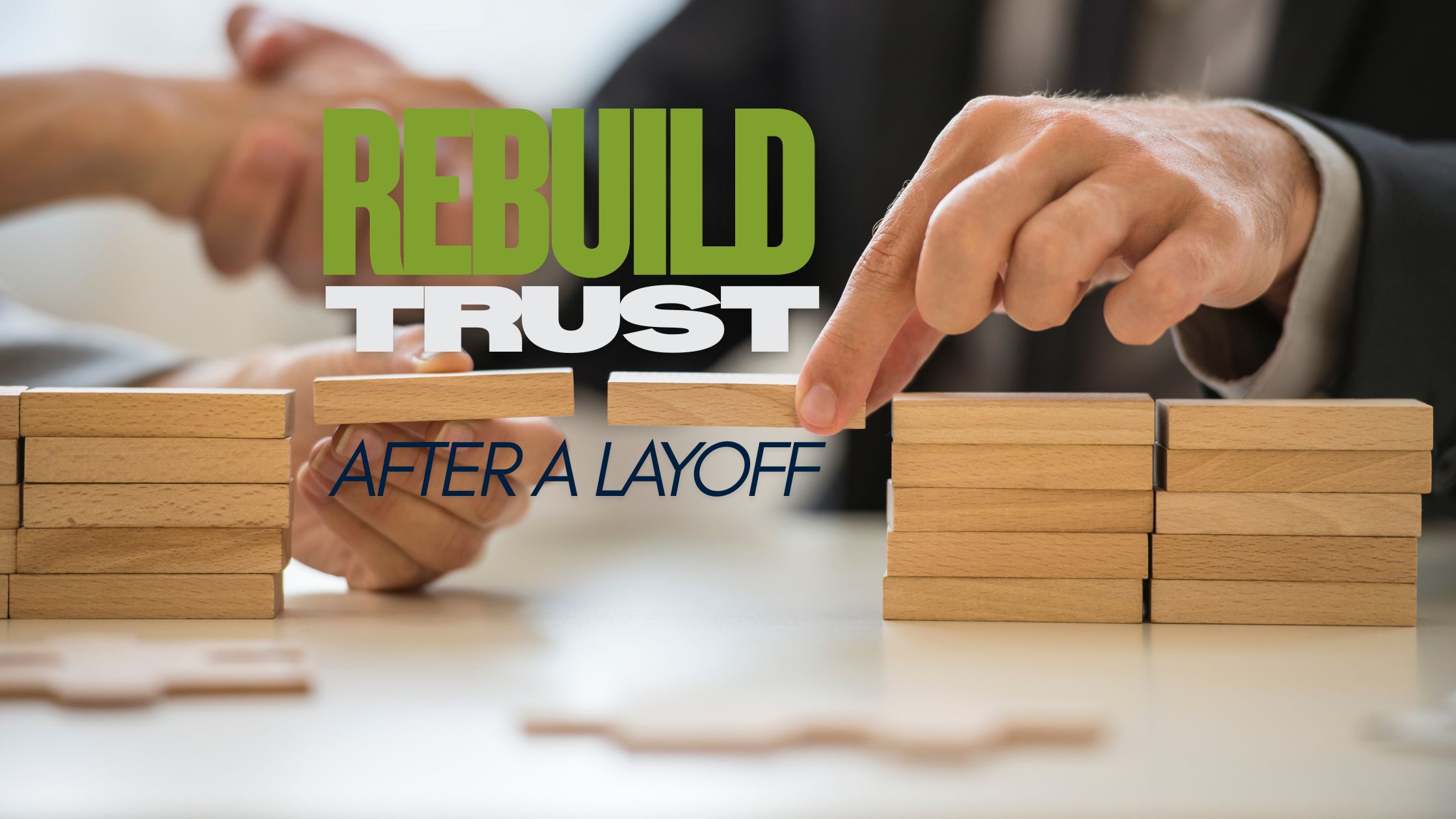6 Steps Every Company Should Take
Layoffs are never easy, not for the employees affected, not for leadership, and certainly not for those who remain. While outplacement services help exiting employees land on their feet, what happens inside the company afterward is equally important. Trust often takes a hit during workforce reductions, with Gallup finding that only 20% of employees strongly agree they trust their organization’s leadership (Gallup, 2025), and rebuilding it is essential to protect morale, engagement, and retention.
Here are six steps companies can take to begin rebuilding trust with their remaining employees after a layoff:
Acknowledge the Impact Honestly
Don’t pretend nothing happened. Employees need their leaders to acknowledge the loss, not just of roles, but of colleagues, stability, and a sense of security. Clear and empathetic communication goes a long way in showing that leadership understands and cares – especially when 74% of survivors report a decline in productivity in the wake of such changes.
Tip: Host a town hall or team meeting that addresses the layoff openly and gives employees space to ask questions. The more casual the better in most cases.
Explain the Why and the What’s Next
Layoffs leave people asking, “Am I next?” – a fear compounded by the fact that just 9% of employees are satisfied with their exit experience from a previous employer, while 42% are extremely dissatisfied.” Leaders must provide context. Share the business rationale behind the decision, and more importantly, outline what the path forward looks like. Employees can better process change when they understand the bigger picture.
Transparency now prevents speculation later. If you don’t have a next step, say so and say you are working on one.
Be Visible and Accessible
Trust is rebuilt through relationships. Leaders must be present, not just in meetings, but in hallways, virtual calls, and one-on-one conversations. This visibility helps humanize the leadership team and sends the message: “We’re in this together.”
Being seen after a layoff is just as important as being heard. Remember the saying about Managing by walking around? It is a good habit to use during a time like this.
Recommit to Remaining Employees
Let people know they are valued. Reaffirm their roles, acknowledge their contributions, and talk about growth opportunities. Survivors often feel “lucky but guilty”, leadership can help them refocus on purpose and progression.
Consider offering stay interviews or career development conversations to re-engage your team. A stay interview is a structured, one-on-one conversation between a manager and a current employee designed to understand what keeps them at the company — and what might cause them to leave. It’s proactive, not reactive, unlike an exit interview, the goal is to retain good employees before they consider leaving.
Reinforce Core Values
When times get tough, values matter most. Use this moment to highlight what your company stands for and how those values guided the layoff process, especially if you provided outplacement support. Demonstrating care in action strengthens cultural trust.
Values-driven decisions leave lasting impressions, inside and outside the company. A well-rehearsed story of success helps to regain trust.
Keep the Dialogue Going
Trust isn’t rebuilt in a single meeting or email. Create mechanisms for ongoing feedback: pulse surveys, open forums, skip-level conversations. When employees feel heard, they’re more likely to feel hopeful.
Make listening a leadership habit, not just a crisis response. Create a list of questions that create dialogue and discussion for better understanding of what is on the mind of your employees.
Rebuilding trust after a layoff doesn’t happen overnight, but it does happen intentionally – research shows that employee engagement and morale can take years—not months—to recover. Companies that support both those who leave and those who stay send a powerful message about who they are. In today’s workplace, people remember how organizations made them feel in moments of change.
If you’re navigating a reduction and want to ensure your people, all of them, are supported, let’s talk about how career transition services can help restore confidence and protect your culture.




